The Longwood Elementary counseling enriched classroom team at HEART held a very successful family fun pizza night at Roundtable Pizza Hayward. One of HEART’s intentions this past school year was to find more time for community building and Family engagement. There was 100% turnout by our families and all of the Longwood team attended. The family feedback shared was that they all had a wonderful time and loved having the chance to connect with other families with shared experiences. The team all shared that it was a great experience to spend time with families having fun outside of the school day. This was such a success that our program has planned a family movie night for all seven of our classrooms to see Inside Out 2 on June 18th. We’re looking forward to continuing these events with our families!
|
The Longwood Elementary counseling enriched classroom team at HEART held a very successful family fun pizza night at Roundtable Pizza Hayward. One of HEART’s intentions this past school year was to find more time for community building and Family engagement. There was 100% turnout by our families and all of the Longwood team attended. The family feedback shared was that they all had a wonderful time and loved having the chance to connect with other families with shared experiences. The team all shared that it was a great experience to spend time with families having fun outside of the school day. This was such a success that our program has planned a family movie night for all seven of our classrooms to see Inside Out 2 on June 18th. We’re looking forward to continuing these events with our families! Blog Post By: Leslie Davidson, Clinical Director
0 Comments
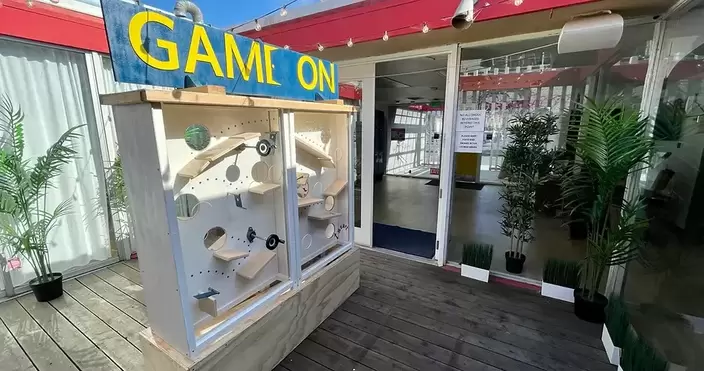 As Team Berkeley, we have a renewed commitment to building connection throughout our program! In the recent months we have enjoyed opportunities for students and staff alike to enhance relationships by engaging in new and exciting experiences together. Here is a little bit about a couple of them 🙂. Field Trip to Kirin- In our Counseling Enriched Classroom program at Berkeley High School, our students took a field trip to Kirin Chinese restaurant in Berkeley. They shared a family-style meal connected to their recent lessons in their Ethnic Studies class. They all reported the food was delicious, they had a great time, and enjoyed each other's company! Staff Outing to Game On- For a recent staff outing we went to Game On in Berkeley where we engaged in some serious gaming challenges together! They have a variety of "gaming rooms" each consisting of "live action adventure" in which you have to work together to solve one or more puzzles. Here is the link for those who are interested- https://www.gameonberkeley.com/about. Our team had so much fun with lots of laughter throughout the experience! Blog Post By: Elizabeth McPhee, Director of School Partnerships
Seneca’s Washington programs have made huge strides towards creating a more robust continuum of services throughout the two counties served. One of our newest programs that we’d love to highlight is our partnership with The Boys & Girls Club of King County (BGCKC.) Although the programming and staff who help us deliver services is new, the partnership between Seneca and BGCKC began a few years ago. Our collaboration first began with Seneca clinicians and behavioral specialists leading social emotional groups in clubs identified as needing additional SEL support. We remained in contact with the BCGKC who shared with us their plan to roll out therapeutic and behavioral support to each of their clubs in King County. To help put their plan in perspective, the BGCKC have over 30 clubs throughout the county. They reached out to Seneca to help support their ‘mental wellness’ initiative and our more formal partnership began. In the beginning, our collaboration included meetings with various community stakeholders and staff of the different clubs to learn directly about the needs emerging; social emotional learning, mental wellness, staff professional development, and individual therapeutic support for youth. With the support of our partners, Seneca began hiring for two full-time clinicians and an Assistant Director who would be the primary leadership for the new program. Early development and continued partnership is currently overseen by one of Washington’s Director of School Partnerships, Katrina Carleton. Katrina was determined to hire a strong and impactful team as this partnership presented as an incredibly unique opportunity for Seneca to bring Unconditional Education to a community setting. We have since hired one full-time clinician, Erica De Los Reyes, who joined Seneca Washington from California. We love when that happens! Erica has been busy building her therapeutic caseload across a few clubs in the area. The staff who interact with Erica have reported seeing growth in the youth she works with and feel that her presence is a wonderful addition to their clubs. Seneca also was lucky enough to welcome back one of the original Seneca Washington staff, Jackie Rivera, as the Assistant Director. Jackie works alongside Katrina and Erica to help lead the partnership and programming efforts. In an effort to align Unconditional Education work in this program, Jackie has developed an Annual Implementation Plan (AIP) to support ongoing collaboration and support for the BGCKC. Feedback from BGCKC, including staff and youth, has been overwhelmingly positive and both teams look forward to the opportunities ahead. We are excited to see how Unconditional Education can look in this setting and the impact that can be had. Blog Post Written By: Alex Mehling, Senior Director of WA Programs
Seneca has had an ongoing partnership with Caliber Beta Academy to provide a Collaborative, or Collab Model. At Caliber, we have two clinicians, one behavior support specialist, and one student support assistant who help facilitate this program. The goal is to keep students who might otherwise need higher levels of placement (Special Day Class, Counseling Enriched Classrooms, Non-Public Schools, etc.) in their general education setting. In order for students to qualify for this service, Caliber has already tried a variety of different interventions. Usually students already have an IEP, academic support services, behavior intervention services, therapeutic services, and possibly speech or occupational therapy services. If these services separately have not been enough to help the student succeed, our staff step in to support with some additional layers. Justin Vizinau, our behavior support specialist, is key in the extra level of collaboration between all the team members involved in students’ treatment. He holds weekly, or biweekly meetings that include all key players for the student’s team. This ensures regular and consistent communication on student plans, updates on any significant events, and collaborative problem-solving regarding behaviors on campus. In his words, “The highlight of the Collab Model is getting to see everyone come together for the better of the client and seeing everyone’s voice and ideas incorporated into the planning and execution of plans”. Clinicians Jamila Voltaire and Eddie Vasquez provide individual therapy, and consistent communication and collaboration with caregivers regarding student treatment. Eddie’s highlight for the Collab Model is “Collaborating with people that actually care about our students’ overall well-being makes Caliber a special place. I love working with all the individuals that support our students, and especially love working with our students.” Together the Seneca team helps build capacity of the campus community by providing valuable psycho-education regarding the internal working model of students, and best practices regarding behavioral interventions. Blog Post Written By: Laura Lin, Director of School Partnerships
Constellation is excited to announce our expanding partnership with Castro Valley Unified School District at Creekside Middle School! We have been in discussions with Castro Valley over the past year to lead up to this exciting news! We will be opening our newest Counseling Enriched Classroom in Fall of 2024 at Creekside Middle School in Castro Valley, and in preparation to open this classroom we will be integrating a clinician to start building relationships on campus this school year. 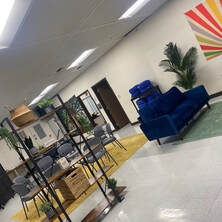 Creekside Wellness Center Creekside Wellness Center During the rest of the 23-24 school year, our amazing Clinical Supervisor, Jessica Welsh, will be going on campus throughout the week to meet with a few students that have been identified as needing additional support and therapy services. This opportunity to be on campus prior to opening a classroom is a wonderful chance to connect with students and staff before we have an entire class team joining the school. We will also be collaborating with school admin on their wellness center and identifying if there are ways our program can support the center's development and expansion. The Creekside School Administration along with CVUSD Sped Department have placed a high priority on mental health and reflected in their extensive background and expertise in the field, ensuring a supportive and nurturing environment for all their students' emotional well-being. 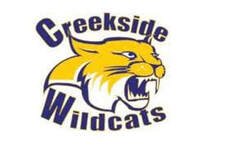 As we prepare to open the CEC next year, we will be looking for a full-time Clinician, along with Classroom Counselors to join the Creekside team. We are so excited for this new opportunity, the expansion of our school-based programs, and our continued collaboration with Castro Valley! Blog Post Written By: Sara Harvey, Manager of Operations
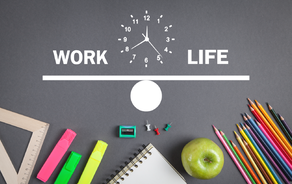 I hope this message finds you all in good health and high spirits as we embark on another exciting school year. I wanted to take a moment to extend a warm welcome to both our returning staff members and those joining our Unconditional Education “UE” family for the first time. The start of a new school year is always a time filled with anticipation and enthusiasm. It’s a time when we can make a positive impact on the lives of our students, foster their growth, and create an environment that inspires learning. Although each year brings opportunities for growth, learning, and inspiration, it also comes with its fair share of challenges and demands. This year, I have a personal goal of “achieving excellence while maintaining balance”, ensuring that I not only excel in my role but also nurture my well-being, and I most certainly want the same for all of you😊. While it is extremely important to deliver outstanding work, it is also equally as important to maintain a healthy work-life balance. Our commitment to providing the best possible services to our students, families, and school communities is unwavering, and it’s this very dedication that makes our UE partnership program exceptional. However, I believe that we can achieve greatness while ensuring that we take care of ourselves and maintain balance in our lives. In our roles as educators, mental health professionals, behaviorists, managers, supervisors, and administrators, we often dedicate ourselves wholeheartedly to our work, which is commendable. It is equally important that we find balance in our lives to ensure our well-being and effectiveness in the classroom and school environment. Balancing our professional commitments with our personal lives, taking time for self-care, and nurturing our own physical and mental health are all vital components of being the best educators we can be. By finding this equilibrium, we can bring our A-game to the work and create a more positive and nurturing environment for our students, families, and school communities. Here are some suggested strategies as we embark on this journey together:
Remember that a well-balanced, fulfilled “you” is better equipped to inspire and nurture our students. It’s not about working harder; it’s about working smarter, with intention and purpose. Our students deserve our best, and we owe it to ourselves to ensure we can consistently provide it. By striving for excellence while maintaining balance, we can continue to elevate the standard of education within our UE Partnership Program. I am excited to see the incredible impact we will collectively make on our students’ lives this year, and I’m confident that by prioritizing balance, we will not only thrive professionally but also find fulfillment in our personal lives. Let’s support each other in this journey toward balance. If you have ideas, resources, or initiatives you’d like to share that promote well-being and balance within our UE community, please don’t hesitate to reach out. I am truly grateful for each of you and the incredible contributions you make. Let’s embark on this new school year with a commitment to both excellence and well-being. Here’s to a fantastic new school year filled with growth, learning, and balance. Amber Blog Post Written By: Amber Fretwell, Executive Director of School Partnerships
One of the HEART program goals was to increase awareness of components of DEI and be able to engage in discussions related to gender, race, sexual identity, and equity issues, that will directly impact how our students and staff feel supported. Each month a classroom team developed a presentation about their chosen DEI topic and presented it to the entire program during our all-staff meetings. Some of the topics included Religion, Immigration Status, and Disability. The teams created power point presentations that included videos, interviews, graphs, quizzes and resources for staff and students. Below are several of the DEI presentations - check them out: Blog Post Written By: Stacey Buenavista, Director of School Partnerships
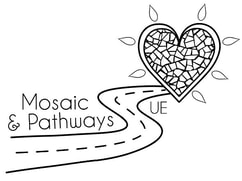 Pathways Counseling Center (Pathways) will soon be marking its second year at Seneca Family of Agencies (SFA). Pathways was integrated into SFA, after a long history as a mental health program component of Girls Incorporated of Alameda County. Pathways provides outpatient mental health services at our counseling center at Seneca’s Golf Links Road Campus, as well as at community locations accessible to our youth and families. Currently, Pathways is Seneca’s only center-based outpatient counseling center in Alameda County. Through its varied and flexible funding streams, Pathways is able to serve children and families both with and without Medi-Cal. Youth who are at-risk for involvement with the juvenile justice system receive counseling and case management through a contract with the Alameda County Probation Department. A Child Abuse Treatment grant allows us to provide for youth with a history of victimization. When Pathways merged with the Mosaic team in July 2022, we were asked to generate a list of values that guided our work. When given the opportunity to write this blog post we wanted it to reflect this co-created list. Each of our clinical staff chose a value and shared how they express that value in their work. Below are descriptions of how we put our values into practice, beside photos of us in either our Golf Links or home office. We hope these photos capture the essence of the therapeutic spaces that we strive to cultivate in all aspects of our work.  Sarah Hall // Outpatient Therapist Connection and Learning from One Another The value of Connection and Learning from One Another is meaningful to me because I tend to structure my clinical thinking and approach to therapeutic work on this value. I lead with this value in the therapy room with children and families and with my team members. The "work" and therapeutic growth only happens once the willingness to learn and grow from one another is engaged (no matter how young or old, verbal language, body language or anything in-between. Every voice has a story to tell and be heard). The most beautiful moments of healing occur when we meet one another in our humanness. Recognizing how to show up and support one other becomes clear when we hold a curious space for understanding. This space is where the deepest connection and learning from one another takes place. The future of mental health is in supporting the healing of communities through fostering continued mutual learning and connection!  Julie Jacobs // Outpatient Therapist Commitment to Work Against Systems of Oppression Pathways clinicians typically meet remotely or in our offices, but this year I’ve been able to meet in schools and in the community with families. This allows me to not give up on those who may have been told that outpatient “wasn’t a good fit” because of barriers to access such as not having a car or not having space at home to meet privately. My team members have encouraged me to recognize that when problems seem binary (access services or end services), there is always a third way through (make services more accessible). 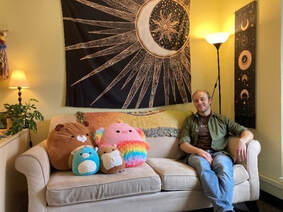 Justin Leonti // Outpatient Therapist Multi-Dimensionality As Pathways clinicians we have a value of multidimensionality, which I’m imagining you’d get a different definition for with each clinician you ask to define it! This value, to me, really emphasizes the whole humanness of each clinician, person, and human being on our team. Our unique identities, positionalities, life experiences, and orientations not only have a place here, but are valued and celebrated. It’s truly a joy to be a part of this team as my whole self and feel welcomed as such. 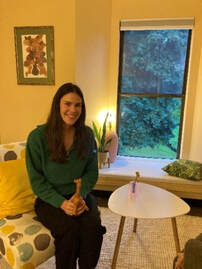 Monica Medor // Bilingual Outpatient Therapist Self Care/Preservation of the Self At Pathways, we prioritize caring for ourselves as individuals in the different ways we each find healing. With the encouragement of team members and supervisors I have felt grounded and balanced by starting my own therapy and by taking time off to nourish myself when needed. 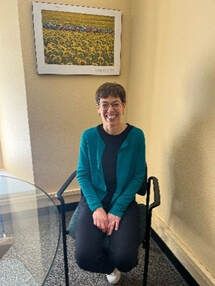 Selene Fabiano // Assistant Director Mosaic Outpatient & Pathways Counseling Connection and Learning from One Another When I started at Seneca in April 2021, I was impressed by the organization’s commitment to building strong relationships, not just with clients and families, but also between staff. Building relationships and lifelong learning are key values for Pathways. At work I put this value into practice by seeking opportunities in which our team can learn and share ideas together. Last year I shared a list of offerings by the Ackerman Institute for the Family as possible trainings our clinical team could view and discuss together. The team selected two excellent talks which we then viewed and discussed together. We found it so valuable that we have chosen another two trainings to watch and discuss this year. 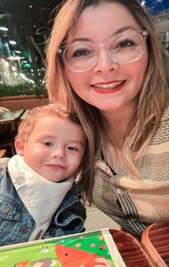 Mayra Reyes Barahona // Senior Health Information Specialist Blog Post Written By: Selene Fabiano, Assistant Director of School Partnerships
The HEART & Constellation programs are gearing up for our 5th Annual Student Art Show! Creating our Futures, A Student Art Show, was created back in 2019 in collaboration with the Hayward Arts Council. It was inspired by an incredibly talented group of students whose passion for art was contagious. Since our first show, it has become one of the highlights of our school year, and an exciting opportunity for our schools, families, district partners, and communities to celebrate our student’s talent, hard work, and bright futures. This year our students' artwork will be displayed in the Hayward Public Library on the 2nd floor from March 29th - April 28th. Student’s have the ability to price their own artwork, and any sales that occur go directly back to those student artists. Over the years we have had students of all ages creating artwork to have displayed in this exhibit, using all types of mediums including paint, pastels, charcoal, photography, poetry, music, spoken word, and more. Our opening event will be on Wednesday, March 29th from 4-6pm at the Hayward Public Library, where students and families can come celebrate the opening of this incredible art exhibit. Light refreshments will be served, and all are welcome to join! If you would like to check out this exhibit, the Hayward Public Library is open Monday-Wednesday (10am-7pm), Thursday (11am-6pm), and Friday-Saturday (10am-5pm), closed on Sundays. Join us in celebrating these incredible students, and their talent and love for art! Blog Post Written By: Sara Harvey, Manager of Operations
 Team work makes the dream work, right? This statement rings true when multi-disciplinary teams work together to support the needs and goals of our students. In Seneca Washington, we have a team of 14 specialists – School Psychologists, Speech and Language Pathologists (SLP), Speech and Language Pathologist Assistants (SLPA) and Occupational Therapists (OT) who work collaboratively together along with school teams to provide special education services and consultation to our partner schools. If a student receives speech or occupational therapy services on their IEP (Individualized Education Plan), you may see students pulled out of class to work with providers individually or the provider may push in to support the student in the classroom. However, another approach to providing services to students that our team embraces is co-treatment. The American Speech Language Hearing Association (ASHA) states co-treatment is “when practitioners from different professional disciplines can effectively address their treatment goals while the patient is engaged in a single therapy session.” In schools, this could look like the OT and SLP working together simultaneously to target skill building in their respective discipline during a session for an individual or group of students. For example, while working with a student whose IEP goal is increasing their social emotional skills, the session may include a turn taking game. During this activity, the OT is supporting the student with turn-taking, emotional regulation and fine motor skills, while the SLP is supporting the student with peer engagement, sportsmanship, attention to the activity and following directions. The co-treatment approach may not only benefit the student, but also positively impacts the classroom, school environment and the providers themselves. After asking the Specialists team, here are some of the benefits they experience when co-treating: Student Benefits
A big shout out to Kelsey Kircher (SLP), Danielle Farrand (SLP), Devon McNeeley (Lead SLP), Nic Huang (OT) and Nicole Matichuk (Lead OT) for sharing their thoughts on co-treatment and how it can be a beneficial approach for all. Blog Post Written By: Gini Sanders, Director of Specialized Services
|
Authors:School Program Partnerships We're Hiring!Interested in joining our School Program Partnerships' Team? Check out our open positions below!
Categories:
All
Archives
May 2024
|



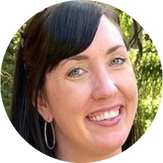


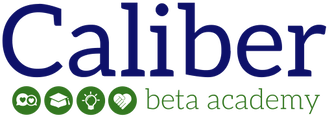
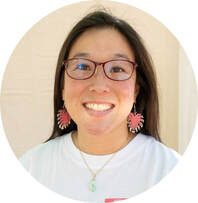
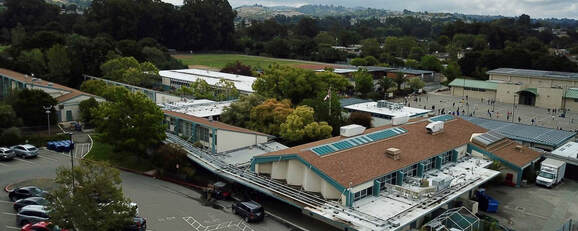




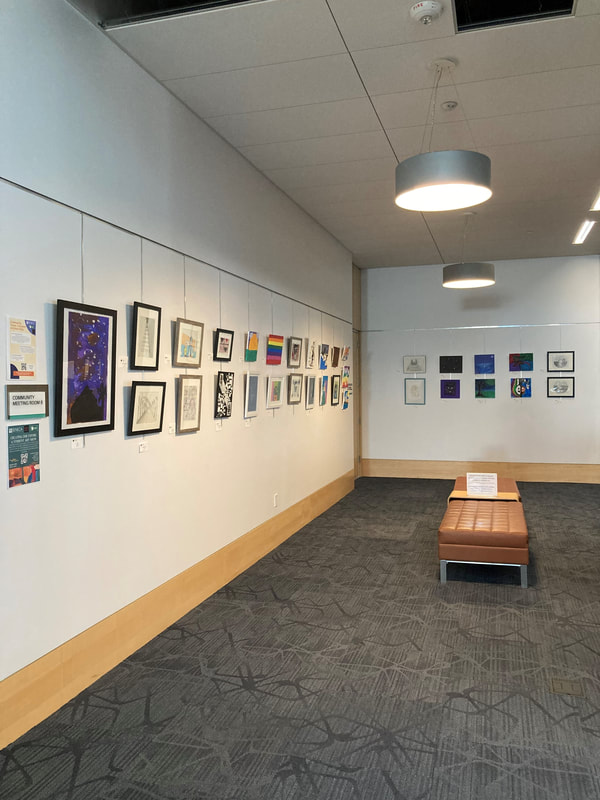
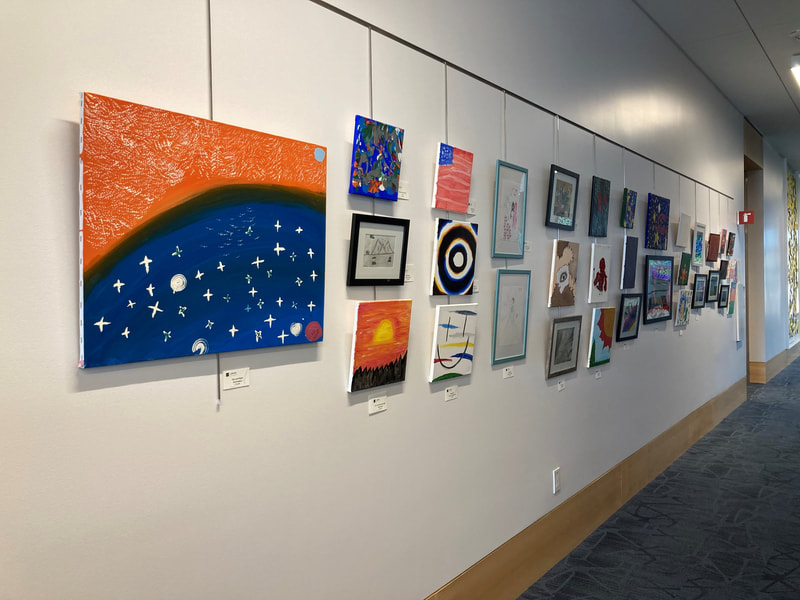


 RSS Feed
RSS Feed